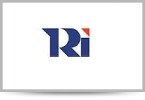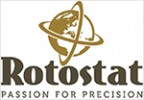
i
Finpower
Aircon
Filter interviews by
Finpower Aircon Interview Questions and Answers
Finpower Aircon Interview Experiences
5 interviews found
Interview Questionnaire
5 Questions
- Q1. Explain refrigeration cycle
- Ans.
Refrigeration cycle is a process of removing heat from a low-temperature reservoir and transferring it to a high-temperature reservoir.
The cycle consists of four main components: compressor, condenser, expansion valve, and evaporator.
The refrigerant is compressed by the compressor and then condensed in the condenser, releasing heat to the surroundings.
The high-pressure liquid refrigerant then passes through the expansi...
- Q2. Thumb rule to calculate TR
- Ans.
Thumb rule to calculate TR
TR (Tonnage Refrigeration) = 12,000 BTU/hr
For example, a 3 TR air conditioner can remove 36,000 BTU of heat per hour
TR is used to measure the cooling capacity of air conditioning systems
- Q3. Autocad commands
- Q4. VRF,VRV difference
- Ans.
VRF and VRV are both air conditioning systems that use refrigerant to cool or heat a space, but VRF is a more advanced version of VRV.
VRV stands for Variable Refrigerant Volume and is a trademark of Daikin Industries, while VRF stands for Variable Refrigerant Flow and is a generic term used by other manufacturers.
VRV systems have a limited number of indoor units that can be connected to a single outdoor unit, while VRF...
- Q5. About the company and about yourself
(1 Question)
- Q1. Ahu technical, FCU, cooling coil, service

(2 Questions)
- Q1. Technical qualifications
- Q2. Experience in required job
(2 Questions)
- Q1. Years of your experience
- Q2. Why required for changing the job
Will check your previous experience and salary package
Overall review about the candidates
Interview Preparation Tips
I applied via Naukri.com and was interviewed before Apr 2023. There was 1 interview round.
(1 Question)
- Q1. Salary previous jobs attitude long term
Interview Questionnaire
1 Question
- Q1. I was asked on technical engineering skills in relation to marketing
Interview Preparation Tips
Top trending discussions






Interview questions from similar companies

I applied via Recruitment Consultant and was interviewed before Sep 2020. There were 3 interview rounds.
Interview Questionnaire
2 Questions
- Q1. Previous company work experience
- Ans.
In my previous role, I led a team in developing scalable software solutions, enhancing system performance and user experience.
Led a team of 5 engineers to develop a cloud-based application that improved data retrieval speed by 30%.
Implemented Agile methodologies, resulting in a 25% increase in project delivery speed.
Collaborated with cross-functional teams to integrate user feedback, enhancing product usability.
Mentore...
- Q2. Plans in next 5 years
- Ans.
I plan to continue developing my technical skills and taking on leadership roles within the company.
Pursue advanced technical certifications
Lead cross-functional teams on complex projects
Mentor junior engineers
Explore opportunities for innovation and process improvement
Collaborate with senior management to set strategic goals
Interview Preparation Tips

Assistant Manager Interview Questions & Answers
Avant Garde Industriesposted on 25 Jun 2025
I appeared for an interview before Jun 2024, where I was asked the following questions.
- Q1. Tell me about yourself
- Q2. Tell me about your past experiences
- Ans.
I have diverse experiences in management, team leadership, and project execution across various industries.
Led a team of 10 in a retail environment, improving sales by 20% through effective training and motivation.
Managed a project that streamlined operations, reducing costs by 15% and increasing efficiency.
Implemented a customer feedback system that enhanced service quality and boosted customer satisfaction scores.
Coo...

Sales Executive Interview Questions & Answers
Avant Garde Industriesposted on 28 Dec 2024
I applied via Approached by Company and was interviewed in Nov 2024. There was 1 interview round.
(1 Question)
- Q1. About your Experience
- Ans.
I have over five years of experience in sales, specializing in building client relationships and driving revenue growth.
Developed and maintained relationships with key clients, resulting in a 30% increase in repeat business.
Implemented a new CRM system that improved lead tracking and conversion rates by 25%.
Conducted market research to identify new sales opportunities, leading to a successful launch of a new product li...

I applied via Naukri.com and was interviewed in Jun 2024. There were 3 interview rounds.
Solving questions paper
CAD &Solid work test
(2 Questions)
- Q1. Project Handling experience
- Q2. Salary negotiation

I applied via LinkedIn and was interviewed before Jan 2023. There were 3 interview rounds.
(1 Question)
- Q1. General Questiones
(1 Question)
- Q1. Basics and Intermediate level
(1 Question)
- Q1. Behaviour and Logicals
Finpower Aircon Interview FAQs
Tell us how to improve this page.
Finpower Aircon Interviews By Designations
Interview Questions for Popular Designations
Overall Interview Experience Rating
based on 2 interview experiences
Interview Questions from Similar Companies
Finpower Aircon Reviews and Ratings
based on 64 reviews
Rating in categories
|
Electrician
5
salaries
| ₹2.5 L/yr - ₹3.4 L/yr |
|
Junior Engineer Production
5
salaries
| ₹1 L/yr - ₹3 L/yr |
|
Quality Engineer
5
salaries
| ₹1.8 L/yr - ₹5.1 L/yr |
|
Planning Engineer
4
salaries
| ₹4.5 L/yr - ₹5.8 L/yr |
|
Senior Sales Engineer
4
salaries
| ₹5 L/yr - ₹7.8 L/yr |

Europa Locks

Trelleborg

MITA

Tokai Rubber Auto Parts India
- Home >
- Interviews >
- Finpower Aircon Interview Questions










